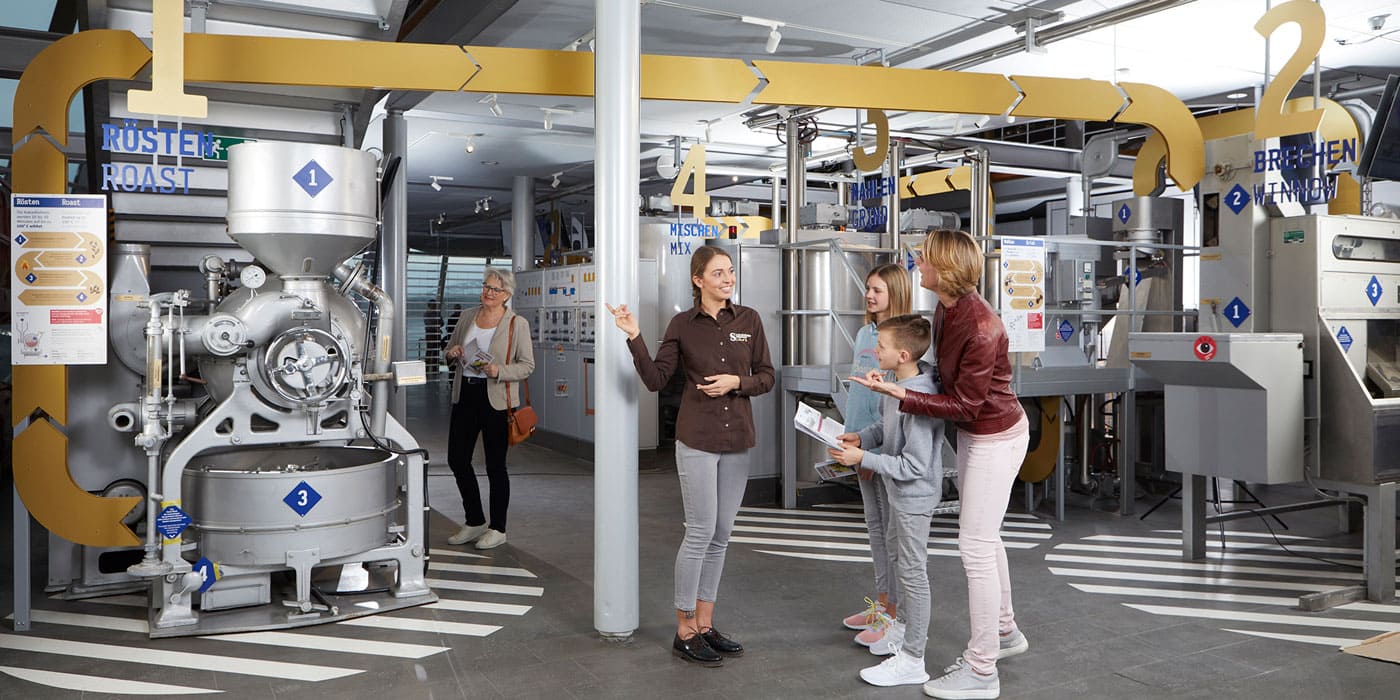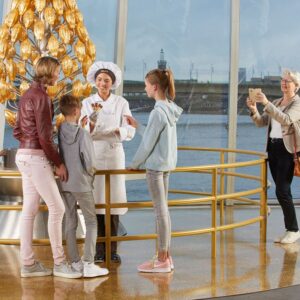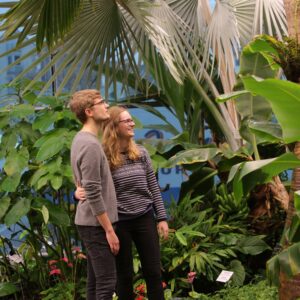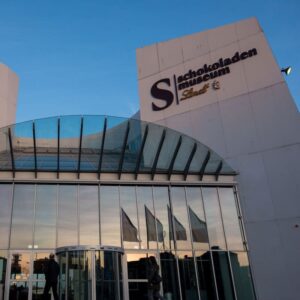The Chocolate Museum
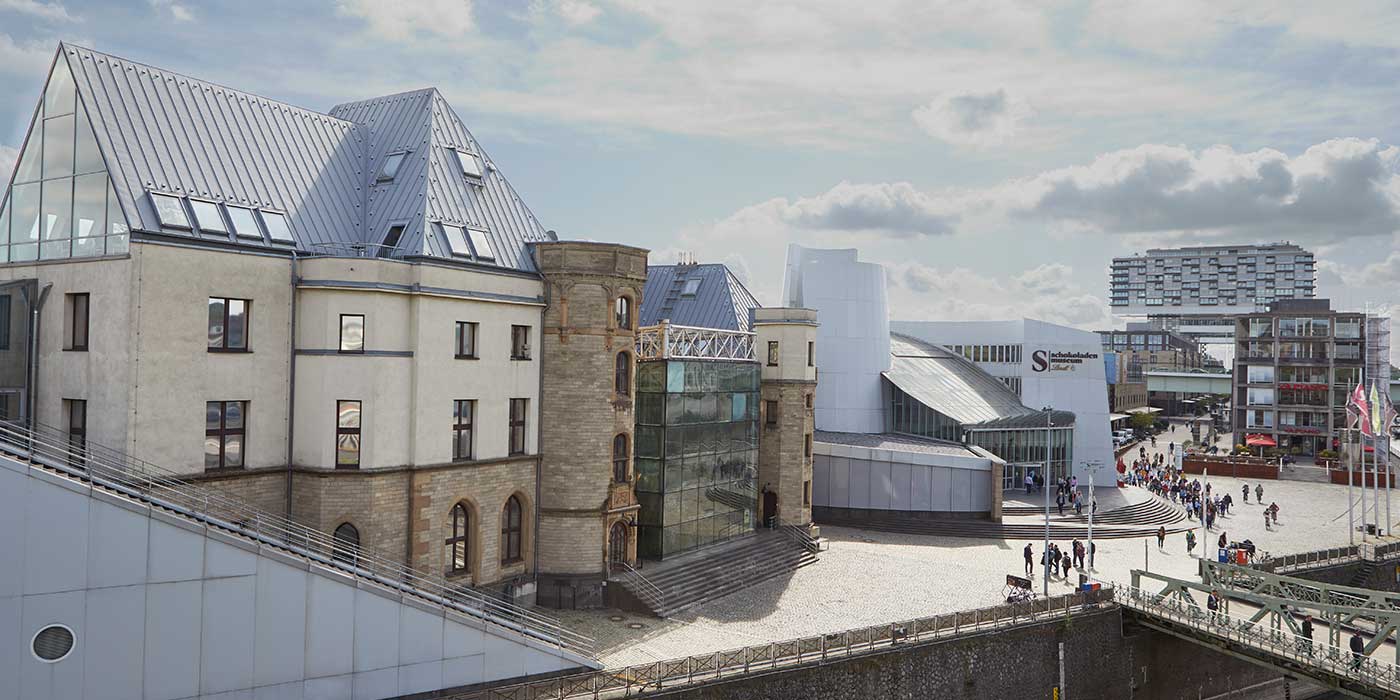
A dream becomes reality
Hans Imhoff (1922-2007), a passionate maker of chocolates, had a long held dream: a chocolate museum with a fountain of unending streams of chocolate.
In 1972, Hans Imhoff acquired the Stollwerck factory in Cologne’s Südstadt city quarter. It was there that he discovered by chance a transport container holding broken machinery, packaging material and old files ready for the rubbish tip. He was instantly aware that he had come across a treasure trove. He had the contents examined, refurbished and restored, creating the foundations for a museum.
But many years were to pass before the opening of the Chocolate Museum. Hans Imhoff used the time to have the culture and industrial history of chocolate researched while he continued to develop and expand his collection.
In 1992, his wife Gerbung Klara Imhoff discovered the perfect site for the Chocolate Museum at the old central customs office in the Rheinau harbour; Cologne’s new landmark could then be constructed.
On 31 October 1993, after a 13-month construction period, the Chocolate Museum was opened. It became a triumph of German museum history that nobody thought possible. With around 600,000 visitors a year, it is the most frequented cultural institution in Cologne.
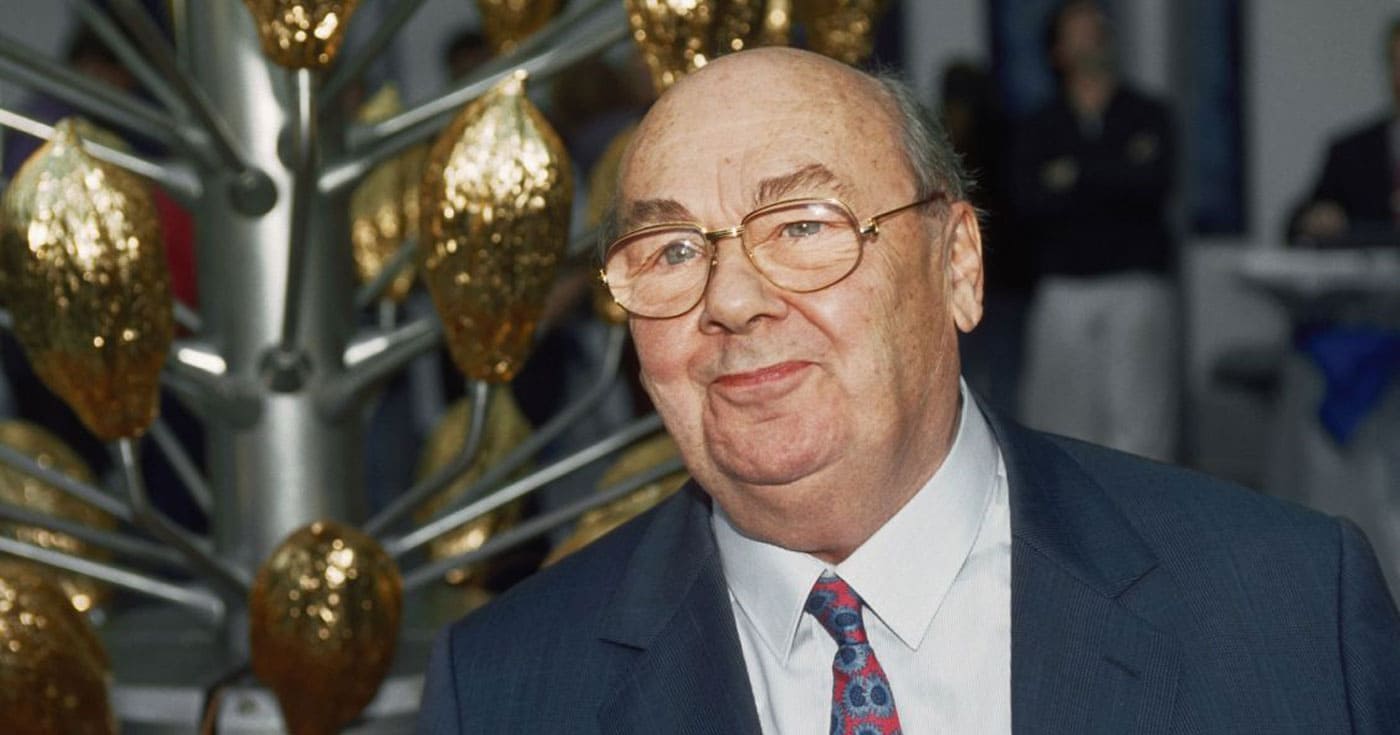
History meets modernity
The requirements of heritage conservation meant it was clear from the outset that the old and the new complex needed to be clearly distinct. A transparent building was opted for which used aluminium and glass for both the exterior and interior and which was built around the former central customs office. In addition to exhibition spaces, a production facility also needed for the glass-walled chocolate factory. The building was constructed at the tip of the Rheinau harbour peninsula in a design reminiscent of the deck of a large boat.
The production facility extends over more 1,300 m2 of floorspace and 2 storeys and has given the complex a wonderful promenade deck, also accessible from outdoors via 2 open stairways. The Museum’s design gives it the appearance of being the “first boat” in the Rheinau harbour. A tour through the 4,000 m2 of exhibition space is like journeying through the cultural history of chocolate, beginning with the ancient American cultures such as the Mayas and Aztecs, proceeding through the baroque and industrialisation periods and ending in the fine chocolate products of the modern day.
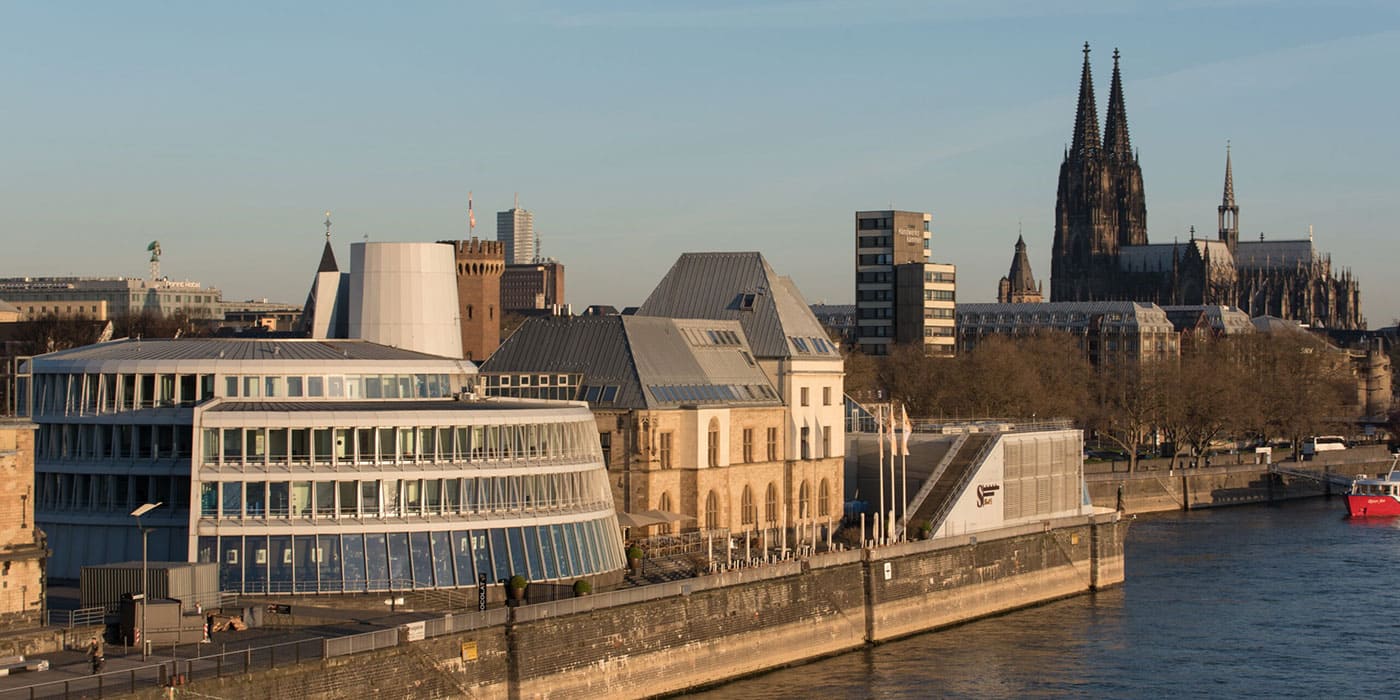
The past and present global story of cocoa and chocolate is portrayed in detail over more than 4,000 m² of floorspace. The diversity of 5,000-years of cocoa’s cultural history is shown as well as modern chocolate production from the cocoa bean through to praline chocolate confectionery.
Awaiting visitors is a walk-through palm house, information on the natural history of cocoa, exhibits on the pre-Columbian cultures of Central America, a major collection of baroque porcelain and silver and a multitude of historical machines from the period of industrialisation.
In the glass-walled production facility and chocolate workshop, visitors can experience how chocolate products are crafted in both mechanised and manual processes.
The chocolate factory
How chocolate is made today is demonstrated in the production facility in the bow of the boat-styled museum building, which also houses the chocolate fountain.
The fountain was specially constructed for the museum, an artistic structure filled with 200kg of warm, liquid chocolate. Smooth, warm Lindt chocolate flows from four stainless steel spouts into a fountain bowl.
In addition to the chocolate fountain, the production facility contains a complete unit for processing cocoa beans: from roasting, breaking and grinding through to the end mixed, rolled and conched chocolate mass.
A single-bar system as well as truffle making and hollow chocolate products give an idea of the delicacies into which chocolate can be made. Around 400kg of chocolate undergoes daily processing through this scaled-down mini facility.
